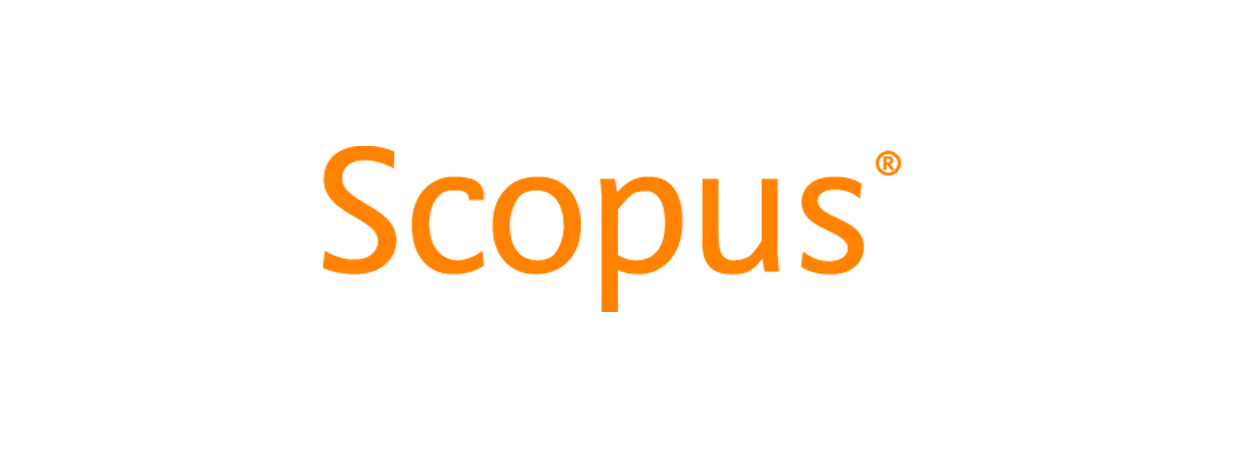DINAMIKA KERJASAMA EKONOMI INDONESIA DENGAN ANGGOTA ORGANISASI KONFERENSI ISLAM (OKI): POTENSI DAN PENGARUHNYA TERHADAP PEREKONOMIAN INDONESIA
Keywords:
OKI, Liberalisasi Ekonomi, Dampak Bagi Perekonomian Indonesia, OIC, Economic Liberalization, Impacts on Indonesia EconomyAbstract
Sejak Organisasi Konferensi Islam (OKI) berdiri tahun 1969, kerjasama ekonomi antar anggotanya yang berjumlah 57 negara terbilang belum intensif. Salah satu indikasinya adalah rendahnya porsi intra-trade dan intra-investment OKI, serta pertumbuhan mereka yang juga relatif lambat. Penelitian ini membahas dinamika kerja sama ekonomi antara Indonesia dan anggota OKI serta prospek liberalisasi ekonomi OKI dan potensi dampaknya terhadap perekonomian Indonesia. Model yang digunakan adalah standard Global Trade Analysis Project (GTAP). Analisis menunjukkan bahwa liberalisasi ekonomi OKI berpotensi memberikan dampak sektoral yang beragam bagi Indonesia, khususnya terlihat pada variabel makroekonomi seperti pertumbuhan ekonomi dan inflasi, output industri dan perdagangan. Indonesia dan anggota OKI lainnya dapat memperoleh manfaat optimal ketika diterapkan full liberalization. Oleh karena itu, Indonesia perlu mengambil peran untuk mendorong percepatan dan pendalaman liberalisasi perdagangan yang lebih komprehensif antar anggota OKI. Sebagai langkah awal, Indonesia perlu segera meratifikasi perjanjian Trade Preferential System of the Organization of the Islamic Conference (TPS-OIC).
Â
Since the establishment of Organization of the Islamic Conference (OIC) in 1969, the level of economic cooperation among its 57 member-countries has been limited, indicated by the low portion of intra-trade and intra-investment among the OIC members and their relatively slow growth. This study discusses the dynamic economic cooperation between Indonesia and the OIC members. Further, it analyzes the prospect of OIC economic liberalization and its potential impacts on the Indonesian economy. It uses secondary data and employs the standard of General Trade Analysis Project (GTAP) model. It shows that the OIC economic liberalization potentially had varying sectoral impacts on Indonesian economy, which was particularly shown by macroeconomic variables (such as economic growth and inflation), industrial output, and trade. Furthermore, Indonesia and other OIC members would obtain optimum benefits when full liberalization is applied.
Downloads
References
Abidin, Irwan Shah Zainal, et. al. (2014). Trade Linkages between Malaysia and the OIC Member Countries: Empirical Evidence Based on Gravity Model. American Journal of Applied Sciences 2014, 11 (11): 1938-1944
Alpay, Savas., Murat Atlamaz dan Esat Bakimli. (2011). Trade among OIC Countries:Limits of Islamic Solidarity. Insight Turkey Vol.13/ No.2 / 2011 pp. 145-170.
Apriantono, Anton. (2007). Prospek dan tantangan Sektor Pertanian di era Globalisasi. Pidato Menteri Pertanian RI Pada Acara Seminar dan Peluncuran buku 35 Tahun PT. Agricon, 17 April 2007.
Asian Development Bank (ADB). (2011). Asia 2050: Realizing the Asian Century. ADB Avenue, Mandaluyong City, 1550 Metro Manila, Philippines.
Badan Koordinasi Penanaman Modal (BKPM). (2013). Statistik Perkembangan Realisasi Penanaman Modal Asing Langsung Berdasarkan Negara. Jakarta.
Estes, Richard J. and Tiliouine, Habib. (2014). Development Trends in Islamic Societies: From Collective Wishes to Concerted Actions. Social Indicators Research Journal 116.1 (Mar 2014) pp. 67-114.
General Secretariat of Organisation of the Islamic Conference. (1991). Framework AgreementonTrade Preferential Systemamong the Member States of The Organization of The Islamic Conference. Jeddah.
Ghani, Ghairuzazmi M. (2011). The Impact of Trade Liberalization on the Economic Performance of OIC Member Countries. Journal of Economic Cooperation and Development Vol. 32-1 (2011).
Gurler Oker. (2000). Blocs in Islamic Common Market-Role and Function Of Regional Blocs And Arrangement In The Formation Of The Islamic Common Market. Journal of Economic Cooperation 21, 4 (2000) Page 1-28.
Hasan, M. Kabir. (2002). An Empirical Investigation of Economic Cooperation among The OIC Member Countries. Economic Research Forum (ERF) Working Paper Series 200212. Cairo, Egypt.
Hertel, Thomas W dan Tsigas, Marinos, E. (1997). Structure of GTAP, dalam Hertel, Thomas W (ed)., Global Trade Analysis: Modeling and Applications. Cambridge University Press.
Hossain, Md Zakir, et.al. (2005). Econometric Analysis of Marketing Potensial of OIC Countries: Some Facts under Global Economy. Managerial Auditing Journal; 2005; 20, 2; ABI/INFORM Global pp. 198-207.
Hossain Ishtiaq. (2012). The Organisation of Islamic Conference (OIC): Nature, Role and The Issues. Journal of Third World Studies; Spring 2012; 29, 1; ProQuest Research Librarypg. 287
International Monetary Fund (IMF). (2013a). World Economic Outlook Database 2013. Washington DC.
International Monetary Fund (IMF). (2013b). Regional Economic Outlook Update- Middle East and North Africa: Defining the Road Ahead. May 2013. Washington DC.
Jafari, Yaghoob, Mohd Adib Ismail and Morteza Sadegh Kouhestani. (2011). Determinants of Trade Flows among D8 Countries:Evidence from the Gravity Model. Journal of Economic Cooperation and Development, 32, 3 (2011), Page 21-3.
Karam, Sina. (2014). Socio-Economic Development And Muslim Countries’ Islamic Solidarity Through Globalization; (A Comparative Study Of 51 Countries of the Muslim World, Including Iran, 2006-2005), Kuwait Chapter of Arabian Journal of Business and Management Review Vol. 3, No.6; Feb. 2014
Kliman, Daniel M. and Richard Fontaine. (2012). Global Swing StatesBrazil, India, Indonesia, Turkey andthe Future of International Order. The German Marshall Fund of the United States.
Lotze, Hermann. (1998). Integration And Transition on European Agricultural and Food Markets: Policy Reform, European Union Enlargement, and Foreign Direct Investment - Four Essays in Applied Partial and General Equilibrium Modeling -. Disertasi doctor rerum agriculturarum di Landwirtschaftlich-Gärtnerischen Fakultät der Humboldt-Universität zu Berlin
Narayanan, G., Badri, Angel Aguiar and Robert McDougall, Eds. (2012). Global Trade, Assistance, and Production: The GTAP 8 Data Base, Center for Global Trade Analysis, Purdue University
Soekarni, M., Hidayat, Agus S., Suryanto, Joko. (2010). Peta Penanaman Modal Asing (PMA) dan Penanaman Modal Dalam Negeri (PMDN) di Indonesia. Jurnal Ekonomi dan Pembangunan Vol. 18 No. 1 Hal 1-20. Pusat Penelitian Ekonomi- Lembaga Ilmu Pengetahuan Indonesia.
Temporal, Paul. (2011). Islamic Branding and Marketing. John Wiley & Sons (Asia) Pte. Ltd., Singapore.
UEA Embassy in Indonesia. Hubungan Uni Emirat Arab-Indonesia. Didownload dari www.uaeembassyjakarta.org pada 20 September 2013.
United Nations Comtrade Data Base. (2013) Indonesia’s Export and Import 2000-2012. http://comtrade.un.org
World Economic Forum. (2013).The Global Competitiveness Report 2013 - 2014. Geneva. www.weforum.org. Diunduh pada September 2013.
World Bank. (2013). Doing Business 2013. Washington DC.
World Trade Organization (WTO). (2013). Understanding The WTO: The Organization, Members and Observers. Didownload dari https://www.wto.org/english/thewto_e/whatis_e/tif_e/org6_e.htm, diakses Pada Juni 2013.










 Buletin Ilmiah Litbang Perdagangan
Buletin Ilmiah Litbang Perdagangan
